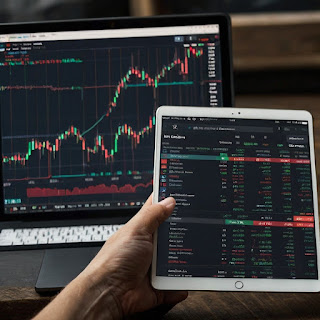Forex trading, or foreign exchange trading, involves the buying and selling of currencies on the foreign exchange market with the aim of making a profit. It is one of the largest and most liquid financial markets in the world, with a daily trading volume exceeding $6 trillion. Here’s an in-depth look at what Forex trading is:
Basic Concepts
Currency Pairs:
- Forex trading involves trading one currency for another, and these trades are done in pairs (e.g., EUR/USD, GBP/JPY).
- The first currency in the pair is the base currency, and the second currency is the quote currency. For example, in the EUR/USD pair, EUR is the base currency and USD is the quote currency.
Exchange Rate:
- The exchange rate indicates how much of the quote currency is needed to buy one unit of the base currency.
- For instance, if the EUR/USD exchange rate is 1.2000, it means 1 Euro is worth 1.2000 US Dollars.
Bid and Ask Prices:
- Bid Price: The price at which the market is willing to buy the base currency.
- Ask Price: The price at which the market is willing to sell the base currency.
- The difference between these prices is called the spread, which is a key cost of trading.
Leverage:
- Leverage allows traders to control a larger position with a smaller amount of capital. For example, with 100:1 leverage, you can control $100,000 with just $1,000.
- While leverage can amplify profits, it also increases the potential for losses.
Pips:
- A pip is the smallest price move in the exchange rate of a currency pair. For most pairs, it is 0.0001, but for pairs involving the Japanese yen, it is 0.01.
- Traders measure their profits and losses in pips.
How Forex Trading Works
Market Hours:
- The Forex market operates 24 hours a day, five days a week, across major financial centers like London, New York, Tokyo, and Sydney.
Types of Orders:
- Market Order: An order to buy or sell a currency pair at the current market price.
- Limit Order: An order to buy or sell a currency pair at a specific price or better.
- Stop-Loss Order: An order to sell a currency pair when it reaches a certain price to limit losses.
- Take-Profit Order: An order to close a trade when the price reaches a specified profit level.
Trading Strategies:
- Scalping: Making numerous small trades throughout the day to capture small price movements.
- Day Trading: Opening and closing trades within the same trading day.
- Swing Trading: Holding trades for several days or weeks to capture larger price movements.
- Position Trading: Holding trades for longer periods, from weeks to months or even years, based on long-term market trends.
Factors Influencing Forex Markets
- Economic Indicators:
- Economic data such as GDP, employment rates, inflation, and manufacturing output can influence currency values.
- Interest Rates:
- Central bank interest rate decisions can significantly impact currency prices. Higher interest rates tend to attract foreign capital, increasing the currency’s value.
- Political Events:
- Elections, policy changes, geopolitical tensions, and other political events can cause volatility in currency markets.
- Market Sentiment:
- Traders’ perceptions and speculations about future market movements can drive demand and supply in the Forex market.
Risks and Benefits
Benefits:
- Liquidity: High liquidity allows for quick execution of trades.
- Accessibility: Low initial capital requirements and the availability of leverage.
- Flexibility: The market operates 24/5, allowing for trading at almost any time.
Risks:
- Leverage Risk: High leverage can lead to significant losses.
- Market Volatility: Rapid price changes can lead to unexpected losses.
- Emotional Trading: Emotional decisions can negatively impact trading performance.
Conclusion
Forex trading is a global financial market where currencies are bought and sold. It offers opportunities for profit due to its high liquidity, accessibility, and flexibility, but it also comes with significant risks. Understanding the basics, leveraging educational resources, and practicing with a demo account are crucial steps for anyone interested in participating in the Forex market. Always approach Forex trading with a well-thought-out strategy and a strong risk management plan.


Comments
Post a Comment